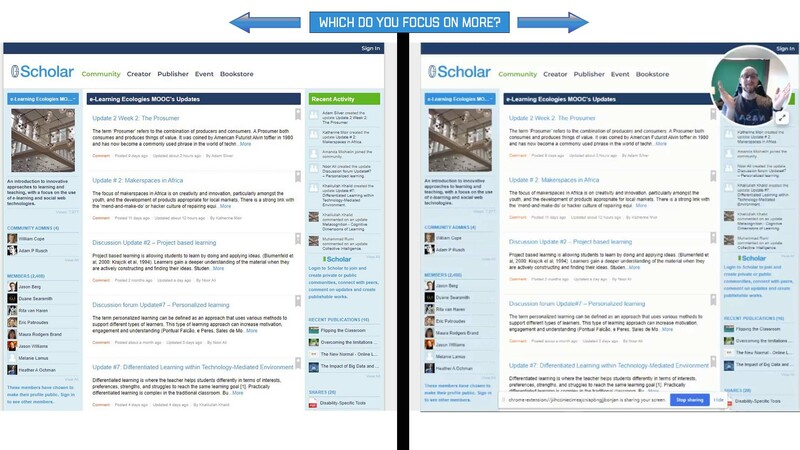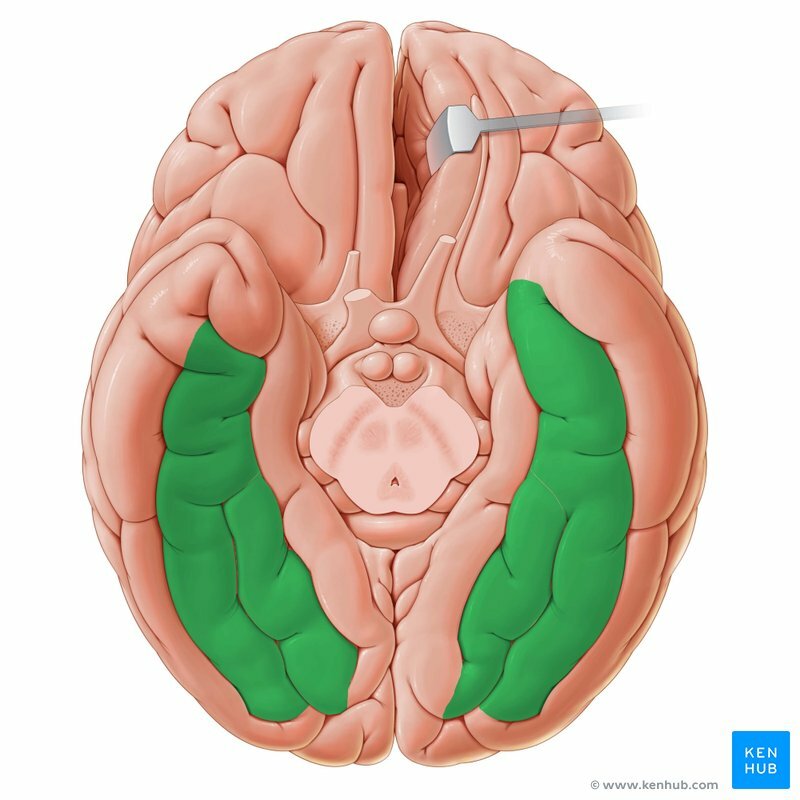e-Learning Ecologies MOOC’s Updates
Update 3 Week 2 - The Role of a Visible Face in Video Learning
Amongst the different tools used in a self-guided learning path, one of the most often employed for technical learning is displaying a video showing a screen capture of a website or application being used to offer instructions for common procedures and functionality. The more common scenario is a voiceover on a full screen application or slides deck with no visible instructor. The other less common scenario is to include an instructor’s face or partial body into the screen capture itself to directly engage the learner while instructing.
Having experience with both these scenarios (and much preferring the latter) I have spent some time measuring the engagement data on both methods and have found engagement to be significantly higher in any screen captured video that also displays a visible instructor. Students seem to be instinctively more focused and alert on a speaker they can see and hear rather than just a disembodied voice overtop of a mouse cursor.
Our brain even has specialized neural circuits called fusiform gyrus whose sole function is face perception, so it’s not a big leap to imagine that activating an entire new part of the brain might have an effect on learning outcomes compared with having nothing to look at other than a semi-static screen. Some research has been done on the effect of memory retention differences between simple voices and a recognizable face attached to that voice which has shown fairly even outcomes when there is a face present as to when there is not, however when queried the majority of consumers of this particular form of video learning have stated a clear preference to having a visible speaker in the frame.
The main blocker to these kinds of visual learning projects tends to be finding a content expert who is comfortable being on camera to work with, and an easy to use video tool or videographer that allows for this type of recording. For those who are nervous about being on-screen I find they very quickly adjust to, and even begin to enjoy the particular type of engagement with their teaching material they are allowed by being on-screen themselves, and once acclimatized to the process, the end result is a significantly more engaging experience for the learner and the instructor alike.
Sources:
https://en.wikipedia.org/wiki/Face_perception
https://rene.kizilcec.com/wp-content/uploads/2014/01/final_version2.pdf




Yes, a very interesting idea, I agree as it brings some sort of connection to the content.
Thank you for sharing.
I see that the coach's presence in the videos adds something of life and interaction to the presented material.
This was so interesting! Thank you.